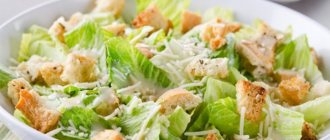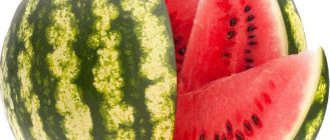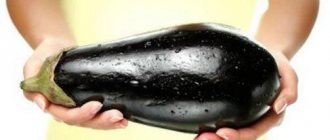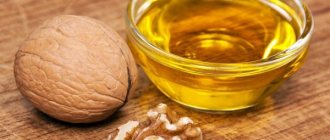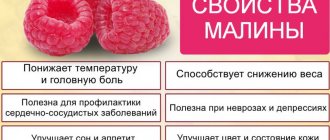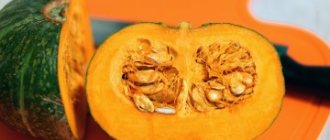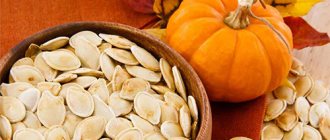During breastfeeding, the mother is faced with the question of which foods can be eaten and which cannot. Many people begin to exhaust themselves with strict diets, which is fundamentally wrong. It is necessary to adhere to strict dietary rules only in the first month of lactation. Then you need to gradually introduce new foods into your diet. Limited and poor nutrition will lead to a lack of vitamins and deterioration in the health of women and children.
A varied and balanced diet is necessary for the full development and development of the baby, and the rapid recovery of the mother after childbirth. The main thing is not to overeat and maintain reasonable food consumption. Read more about how to eat properly for a nursing mother here.
Porridge should definitely be included in the diet of a nursing woman. But this healthy and tasty dish has a number of limitations.
Rules for eating porridge during lactation
- Introduce each type of porridge gradually. For the first time, try one spoon and observe the child’s reaction for two days. If there is no negative reaction, the porridge can be eaten without risk to the baby;
- Semolina and multigrain porridge can be introduced after 5-6 months of lactation;
- If a baby is constipated, reduce the consumption of rice porridge;
- If your baby has increased gas production, limit the consumption of pearl barley;
- In the first 3-4 months, porridge must be boiled in water, since cow's milk contains a strong allergen - cow protein. Subsequently, you can dilute water and milk in half and gradually switch to milk porridge;
- You can start eating porridge with 40-50 grams per day, then gradually increase the dose. The daily intake of porridge per day is 100-150 grams;
- You can add dried fruits, apples and pears, and butter to the porridge. But you need to give up sugar and a lot of salt;
- Please note that some children may normally perceive a particular type of cereal, while others may not. It depends on individual development and heredity. If your baby develops allergies or indigestion, you should stop taking it for a month. And then try again to introduce porridge into the menu.
How often and with what can you eat bran during breastfeeding?
This most valuable product for health works best when it is eaten regularly. A nursing mother should use bran daily, especially if you suspect a deficiency of B vitamins or have difficulties with bowel movements and natural bowel cleansing.
If this dish seems overly bland and tasteless, it can be combined with other ingredients. For example, dairy products, fruits and juices from them. Bran can also become a useful component for other foods - for example, they can be added to morning oatmeal, homemade cookies, and even cutlets.
Below we provide a simple table that will tell you what a nursing mother can eat bran with in different months after giving birth. Typically, such recommendations are relevant in the first six months of a baby’s life, when his body is overly receptive and sensitive to heavy or new foods in the mother’s diet.
| 1 month | With fermented milk products : kefir, cottage cheese. You can also steam the bran with water. You can combine them with permitted fruits - baked apples and bananas. |
| 2 month | With soups based on low-fat meat broth, with various types of cereals . You can also add bran to fruit juices (preferably those made for children). |
| 3 month | With milk . Whole cow product is usually allowed this month, but it is better to boil the milk first. |
| 4 month | With dried apricots, prunes. This option is guaranteed to relieve constipation and saturate the body with useful substances. Before the 4th month, combining bran with dried fruits is not recommended, so as not to cause tummy problems in the baby. |
| 5 month | You can add bran to almost all permitted and low-fat dishes and drinks . However, it is worth remembering that such a product does not like high temperatures and boiling. |
| 6 month | With yogurt and fresh fruit , as well as homemade desserts and pastries. |
Bran during breastfeeding is a nutritious and valuable food for the body of a young mother. This product gives strength and allows you to lead an active lifestyle, controls appetite and helps the stomach function.
What porridges can you eat during breastfeeding?
| Groats | Compound | Beneficial features | Contraindications |
| Buckwheat (buckwheat) | Vitamins E, B1 and B2, iron, potassium, magnesium, phosphorus and sulfur | Helps with anemia and improves lactation, is quickly absorbed, improves the structure of hair, teeth and skin | It is not recommended to eat buckwheat with milk; these products are not compatible with each other and are difficult to digest |
| Oatmeal | Vitamins A and C, B1, B2 and B5, E and K; calcium, potassium, magnesium, iron, sodium and phosphorus | Cleanses the body, removes toxins, strengthens the immune system and helps with stress | Gluten allergy, heart and kidney failure |
| Millet | Vitamins B1, B2 and B9, E and PP; iron, potassium and sodium, calcium and fluorine, magnesium and iodine | Helps with heart disorders, improves hematopoiesis, affects memory and strengthens the immune system | It is not an allergenic cereal and is normally digested; should not be abused if you have problems with the stomach or stool |
| Rice | Vitamins B, E and H; iron, sulfur, phosphorus, magnesium, | Helps with diarrhea, fatigue and stress, cleanses the body, strengthens nerve cells | Do not overuse for constipation, high blood pressure, heart and vascular diseases |
| Corn | Vitamins B, E and A, iron, potassium and phosphorus, calcium, magnesium | Helps with constipation and improves digestion, removes toxins, improves hair and skin condition | It is not recommended to consume more than twice a week, especially if you have stomach problems; the yellow color of the cereal can cause allergies in the baby |
| Semolina (semolina) | Vitamins B1, B2, B6 and E; potassium, calcium, sodium, magnesium, phosphorus and iron | Not as healthy as other cereals. It helps with intestinal diseases, removes fat and mucus from the body | Contains a large amount of gluten, which damages the walls of the small intestine, disrupts digestion and causes allergies. In addition, porridge is very high in calories. It is not recommended to consume it before 5-6 months of lactation and more than once a week. |
| Barley | Vitamins of group B, E and PP; potassium and phosphorus, sulfur, calcium, magnesium and iron | Helps cope with allergies and excess weight, gives a feeling of fullness and is easily digestible, fights stress, strengthens the immune system | It does not give a negative reaction and is not harmful; it should not be abused in case of severe diseases of the heart, stomach and intestines. You can eat three times a week! |
Is it possible to eat bran while breastfeeding?
In the first month, the diet of a new mother is quite meager. However, this does not mean that the menu must be poor and monotonous. On the contrary, the more often you supplement it with new dishes and products, the sooner you will recover after childbirth and the better quality your breast milk will be.
Bran is the rough outer part of cereals and plant crops, which retains all the beneficial properties and vitamins.
Such food is rightfully considered one of the most favorable for the functioning of the gastrointestinal tract and is hypoallergenic. Therefore, if the doctor did not give you strict recommendations and did not order you to follow a special strict diet excluding cereals and grains, bran can and even should be eaten while breastfeeding.
To make sure that your body is ready for such roughage, first try a few teaspoons of uncooked bran. To do this, you can simply mix the product with kefir and consume it after breakfast.
- Basically, all doctors’ concerns come down to the reaction of the mother’s body, and not her infant baby - food rich in fiber can sometimes cause excessive gas formation in the intestines, since it is practically not digested and is excreted from the body almost in its original form.
- You should add bran to your menu with caution if you generally do not tolerate cereals well. Sometimes a person has this feature, and then doctors recommend adhering to a gluten-free diet. Poor tolerance to bran may be associated with a so-called allergy to cereals.
- It is also worth holding off on bran for mothers who have had a caesarean section. The fact is that in the process of digesting cereals, a slight bloating of the intestines may occur, and, as a result, the pressure on the fresh, not yet healed uterine suture will increase, causing discomfort.
But in all other cases, bran will not only be a useful product for a nursing mother, but will also help you feel more alert and healthy. A bran-based breakfast also allows you to lose weight faster after childbirth, because slowly digested food gives you a long-lasting feeling of fullness and relieves hunger pangs.
If you have already tried bran and introduced this ingredient into your menu after giving birth, and neither your body nor the baby’s stomach reacted negatively to it, then you can safely make such food a daily dish. For example, you can eat bran for breakfast or in the evening along with fermented milk products to improve digestion.
Can buckwheat be harmful?
Buckwheat is a very healthy product, but everything is good in moderation.
- Overconsumption of this cereal may have a negative impact on people with kidney failure.
- Diabetics should also use this product carefully, as the starch in the composition can increase blood glucose levels.
- Mothers who have problems with blood pressure also need to be wary of buckwheat, as consuming it can dilate blood vessels, which will aggravate the situation.
For nursing women, it is permissible to eat buckwheat 2-3 times a week. A serving should not exceed 200 g of cooked cereal.
Despite all the benefits of the product, we must not forget that nutrition during breastfeeding should be varied, so there is no need to give preference to one thing.
Oats and porridges made from them: all the benefits and warnings
Oats contain many nutrients: magnesium, potassium, iodine, vitamins A, B, E. Therefore, oatmeal should be present in the diet of a nursing mother. It improves lactation and makes breast milk healthy.
Oatmeal contains a lot of iron, which improves blood composition and fights anemia. Improves intestinal motility, relieves inflammation due to its enveloping effect. Strengthens the immune system and increases the body's resistance to colds.
Oatmeal normalizes the functioning of the nervous system. Eating oatmeal helps prevent stress and depression.
Oatmeal is contraindicated for those who have celiac disease, as well as for women and children predisposed to allergic manifestations.
Possible harm of bran for mother and baby
Even such a useful product can be harmful if used incorrectly. The daily intake of bran of any kind is no more than 25-30 g. If you eat more, a woman may experience intestinal discomfort (bloating, gas) or constipation. In this case, the baby will also suffer, since through mother’s milk he will receive too large a dose of active substances.
Abuse of grain shells can lead to hypovitaminosis. The fact is that food eaten together with bran will pass through the intestines too quickly and the beneficial substances simply will not have time to be absorbed. Hypovitaminosis will steadily lead to a deterioration in health.
If a mother or child suffers from gluten intolerance, then bran for the diet should be selected carefully, choosing rice, buckwheat or flaxseed. Unfortunately, it is very difficult to find them in stores, since mainly wheat and rye varieties of the product predominate on the shelves - they cannot be eaten. If you cannot find the right product, then it is better to exclude bran from the menu altogether.
Mother's nutrition while breastfeeding
Juices during breastfeeding should have pulp. In this case, those nutrients that are contained in the mother’s blood are used. Nutrition during breastfeeding should first of all be nutritious. The breastfeeding diet includes a fairly large amount of food.
Breast milk contains elements that are produced by the mother's mammary gland. Thus, breast milk contains foods that make up the mother's diet. Often mothers ask the question of what they eat while breastfeeding or what they refuse in order to minimize the process of gas formation in the child.
Pregnancy and childbirth are quite a difficult period for the female body. Therefore, in the postpartum period, a woman needs to recover, replenish those substances that were spent during pregnancy and birth of the baby.
They enter a woman's blood from her intestines. As a result, substances that cause allergic reactions, which should normally be eliminated from the body, are absorbed into the blood. After this, they pass into breast milk. The diet of the mother, and therefore her child, should contain as many natural and fresh foods as possible. It is very important that the food contains a large amount of products containing calcium.
How to use the Dukan diet while breastfeeding
In order to help the baby, the mother should give up foods that can cause excess gas formation. First of all, these are raw vegetables, especially cabbage, black bread, legumes, kvass and other fermented products.
With their help, the mother should create a varied diet containing the required amount of essential nutrients, vitamins and microelements. A nursing mother can include fermented milk products in her menu - kefir, bifidokefir, yogurt, yoghurts without additives and dyes.
It is better to use milk for making porridges and purees. In this case, the mother can take about 200 ml of milk. In addition to the above dairy products, a woman can include mild cheese and cottage cheese in her diet.
Mom is absolutely not allowed to smoke during this period. How not to turn into a “bun” during pregnancy and breastfeeding? In this regard, Dr. Dukan does not recommend that pregnant or breastfeeding young ladies lose weight using the Attack or Cruise menu.
Quality and quantity of breast milk
The protein day, which is present weekly on the Consolidation menu, must be cancelled, because a woman’s body in such a situation should not be subjected to such harsh “experiments” with the diet.
Exactly the same number of times you can eat according to the “glutton” menu, that is, eat something from your favorite dishes, even if they are not on the permitted list. Recently, an episode of the “Test Purchase” program was released on Channel One, in which they found out which weight loss products really work and which ones are simply unsafe to use.
You eat healthy and TASTY and at the same time get an ideal figure! And after a long search, I found it!!!! I’m delighted. The result is obvious. Dear women! Don’t even doubt it, it works. Usually, if a woman had a similar problem during pregnancy, then with childbirth this problem disappeared. Drug treatment after childbirth is often contraindicated during breastfeeding - this is understandable, because what is good for the mother is not always good for the baby.
Of course, they should not be large - your body is already exhausted, providing life for you and your child for almost a year, it should not be overexerted during this period.
This is understandable, because during pregnancy a colossal load is placed not only on the body, but also on the psyche. All kinds of aromatic oils, relaxing massages, pleasant music and other, other, other pleasures will help with this.
When copying this article, an active link to supermams.ru that is not blocked from search engines is required! However, even the most “innocent” foods in a mother’s diet can cause colic, bowel disorders or food allergies in some, especially sensitive children.
We will tell you in this article exactly which foods and in what sequence are best introduced into the diet of a nursing mother at different periods of the baby’s age. But it’s not only the child who needs increased amounts of nutrients. Milk is produced in the mother’s body, largely due to her own reserves of proteins, fats, carbohydrates, including vitamins and microelements.
If possible, sleep during the day and take advantage of the moments when your baby is sleeping to rest. In addition, for your health and for the health of your baby, it is necessary that the family be quiet and calm. Also, to establish stable and constant lactation, it is necessary to follow a diet.
Foods that a nursing mother can eat
Now, let’s take a closer look at the mother’s nutritional habits during different periods of the baby’s life. Nutrition of a nursing mother in the first days after childbirth During physiological childbirth, an appetite should appear within a few hours. It is better to consume cottage cheese and dishes made from it (casseroles, cheesecakes) in small quantities so as not to cause constipation. Starting from the third day after childbirth (if there are no contraindications and your doctor has not prescribed an extension of the diet), you can proceed to your normal diet.
Remember, an abundance of flour products in the diet can lead to increased gas formation in the baby. Bran and wholemeal bread will be very useful if a nursing mother experiences constipation after giving birth. In addition, a large amount of oatmeal in the mother's diet can lead to loosening of the baby's stool. Buckwheat (buckwheat, buckwheat flour) can be eaten in any quantity.
The main importance in the diet during breastfeeding is given to dairy products. It is very important that what mothers eat while breastfeeding is of good quality and contains the nutrients the baby’s body needs. The list of diet products for breastfeeding includes various cereals and bran bread. At the same time, the choice of food products during breastfeeding should be selected taking into account the fact that the mother’s body is connected to the child.
novagazarda.ru
